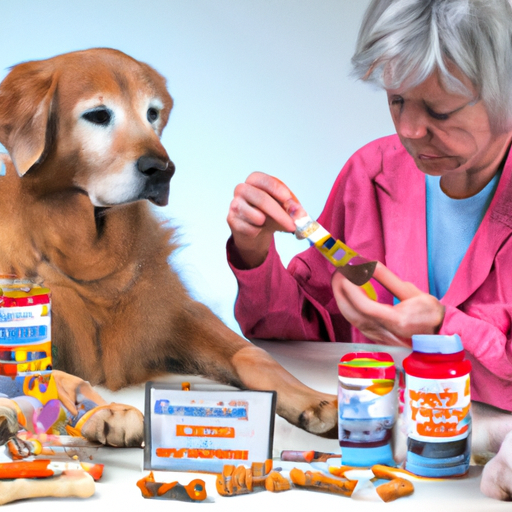As a caregiver, it can be heart-wrenching to see your furry friend struggling with the pain and discomfort of arthritis. But don’t lose hope; there are numerous ways to alleviate their suffering and improve their quality of life. This comprehensive guide will cover five key strategies for managing canine arthritis.
1. Over-The-Counter (OTC) Medications
Many of us are familiar with the non-prescription drugs we take when our joints ache. But did you know some of these medications are safe for your dogs too?
- Glucosamine: This supplement helps to restore joint health and can be found in many over-the-counter dog foods.
- Chondroitin: Often paired with glucosamine, this supplement helps to maintain the elasticity of joint cartilage in dogs.
- Fish Oil: The Omega-3 fatty acids in fish oil are known to reduce inflammation, which can alleviate arthritis symptoms.
| Medication | Benefit |
|---|---|
| Glucosamine | Restores joint health |
| Chondroitin | Maintains joint elasticity |
| Fish Oil | Reduces inflammation |
2. Physical Therapy
While it may seem counterintuitive, physical activity can actually alleviate arthritis symptoms. It’s all about finding the right balance and type of exercise.
- Low Impact Exercise: Walking, swimming, or slow jogging can keep your dog’s joints flexible without causing undue stress.
- Stretching: Regular, gentle stretching can help maintain joint mobility and flexibility.
- Massage: A professional canine massage therapist can provide relief and stimulate blood flow to the aching joints.
3. Prescription Medications
In some cases, over-the-counter treatments may not be enough. If your dog’s arthritis is severe, your vet may prescribe stronger medications, such as:
- Non-Steroidal Anti-Inflammatory Drugs (NSAIDs): These reduce inflammation and can provide immediate relief from pain.
- Steroids: These can be used in severe cases to reduce inflammation, but they do come with side effects and should be used with caution.
4. Dietary Changes
Believe it or not, what your dog eats can significantly impact their arthritis symptoms. A balanced, nutrient-rich diet can help manage their weight (thus reducing strain on their joints) and provide essential nutrients for joint health.
- High Protein: A diet high in quality protein can help maintain muscle mass and overall health.
- Low Fat: A low-fat diet can help prevent weight gain, reducing the pressure on your dog’s joints.
- Plenty of Fruits and Vegetables: These provide antioxidants, which can reduce inflammation.
5. Alternative Therapies
Finally, don’t overlook the potential of alternative therapies. Some dog owners have found success with:
- Acupuncture: This ancient Chinese therapy can stimulate blood flow and relieve pain.
- Hydrotherapy: Exercising in water can provide the benefits of physical activity without the strain on joints.
Frequently Asked Questions (FAQ)
Q: Can I give my dog human arthritis medication?
A: No. Many human medications can be harmful or even fatal to dogs. Always consult your vet before giving your dog any medication.
Q: How can I tell if my dog has arthritis?
A: Common signs include limping, difficulty moving, yelping when touched, and changes in behavior. If you notice these signs, consult a vet.
Q: How common is arthritis in dogs?
A: Arthritis is quite common in dogs, particularly older ones. It affects approximately 1 in 5 adult dogs.
Remember, with the right care and treatment, your dog can lead a happy, comfortable life despite arthritis. Always consult with your vet to find the best course of action for your furry friend.



